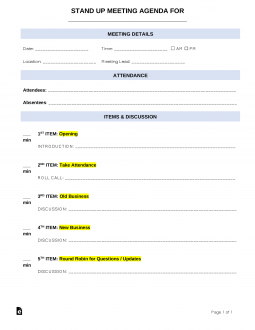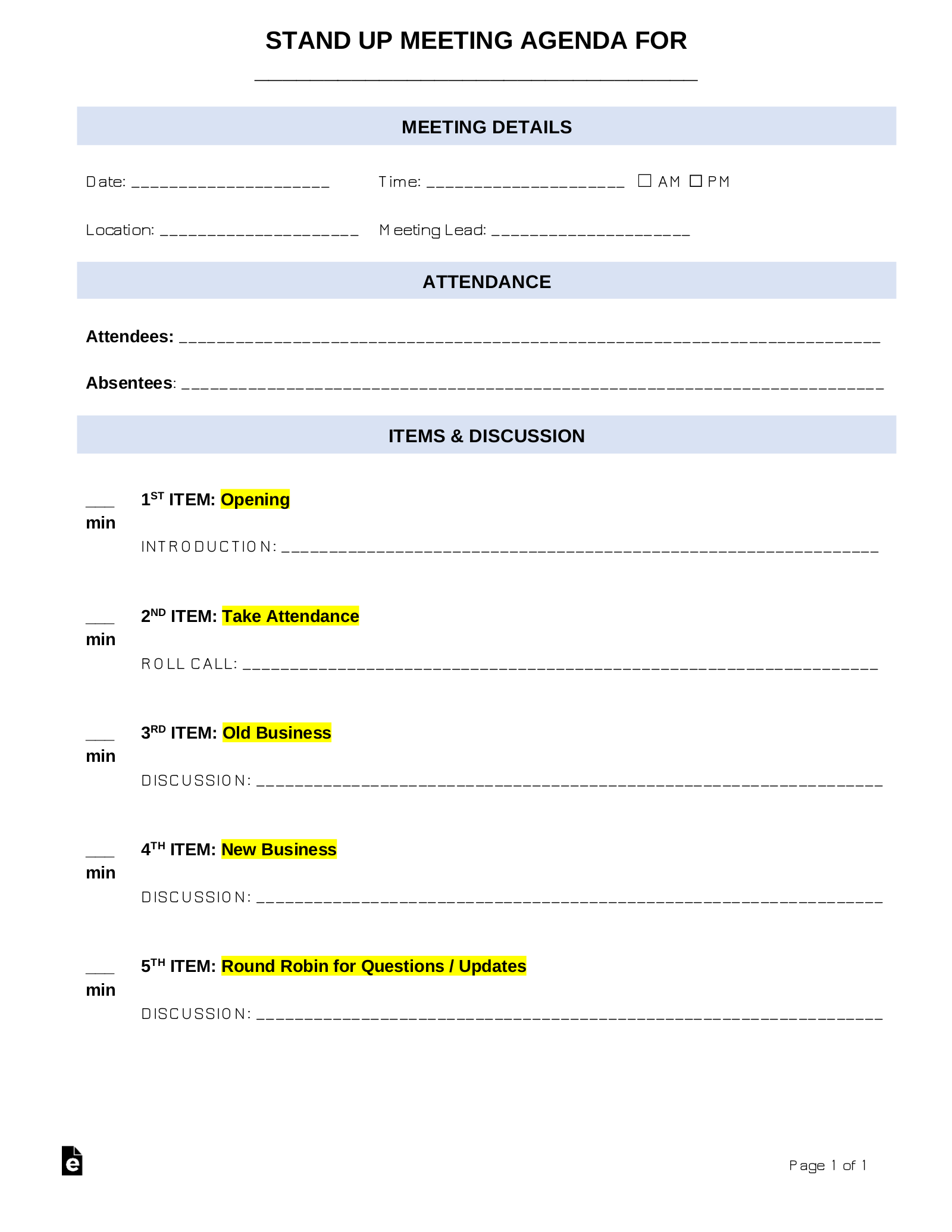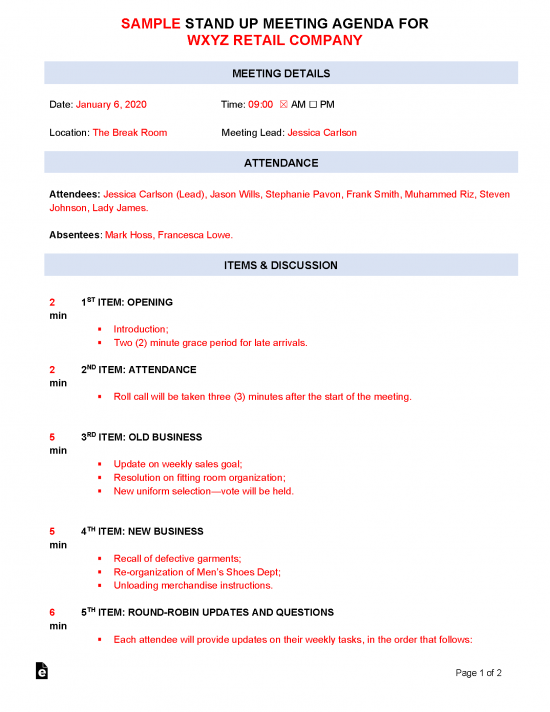Updated August 08, 2023
A stand-up meeting agenda serves as an organized guide for all items that are to be discussed during a regularly scheduled stand-up meeting. Agendas ensure meetings are executed in an effective manner and provide a reference for attendees to follow throughout the duration of said meeting. Since stand-up meetings tend to be short in length, agendas address the immediate business at hand and not any long-term projects or goals; in fact, they usually solely address business pertaining to the 24 hours prior to and after the meeting. Pairing a stand-up meeting with an appropriate agenda can expedite the duration and improve the flow of the discussion, ensuring no items go undiscussed or forgotten.
Table of Contents |
Formatting (6 parts)
Note, the formatting of a stand-up meeting agenda may vary depending on the nature of the meeting being conducted. Below is a format tailored for businesses/organizations that wish to convene regularly (particularly, daily) to address immediate company-specific business.
I. Meeting Details
The leader/facilitator of the meeting shall include basic meeting details, such as date, time, and location. Stand-up meetings typically occur in open workplace areas, so it is important to be specific on the agenda.
II. Take Attendance
All attendees can be recorded after taking roll call. Any absentees can be listed as well.
III. Old Business
The first order of business during stand-up meetings often involves addressing matters that have yet to be resolved or completed, such as reviewing previous meeting minutes. The meeting leader can also inquire about the attendees’ progress on certain outstanding projects or goals during this allocated time on the agenda.
IV. New Business
Stand-up meetings are often held to address the ever-changing circumstances and issues/troubles that arise throughout the span of each workday. Therefore, after tackling old business, the leader and attendees shall discuss upcoming affairs as well as any new, immediate tasks or short-term goals.
V. Round-Robin for Questions / Concerns
It is crucial to open the floor for questions and comments in order to allow attendees to voice their input. An effective way to do this is through a round-robin-styled discussion, which involves each attendee chiming in with their feedback on the old and new matters in question. What’s more, each attendee may provide any updates regarding projects/assignments that they have been working on since the last meeting.
Having this item on the agenda will also encourage attendees to reserve their questions until the allocated time for open discussion.
VI. Conclusion
The leader of the meeting can use this time to address any remaining business or answer questions. Once all items are dealt with, the meeting can be adjourned by ending on a positive note that considers the long-term goals of the company/organization.
Sample – Stand Up Meeting Agenda
Download: PDF, MS Word, OpenDocument



